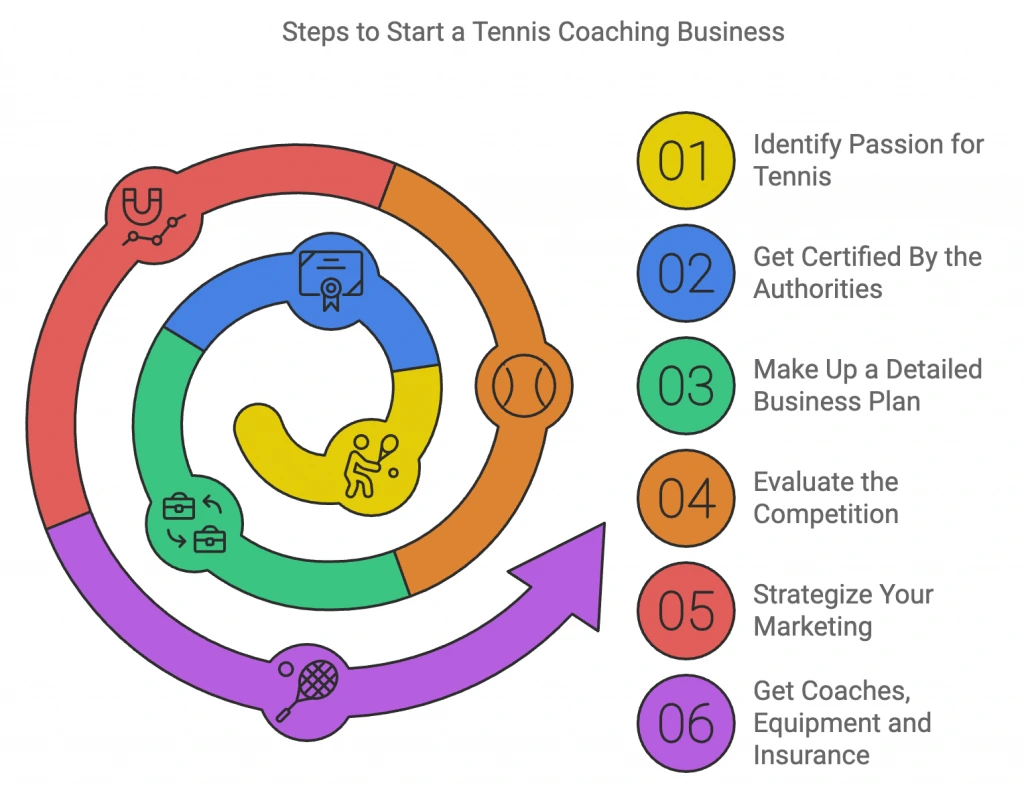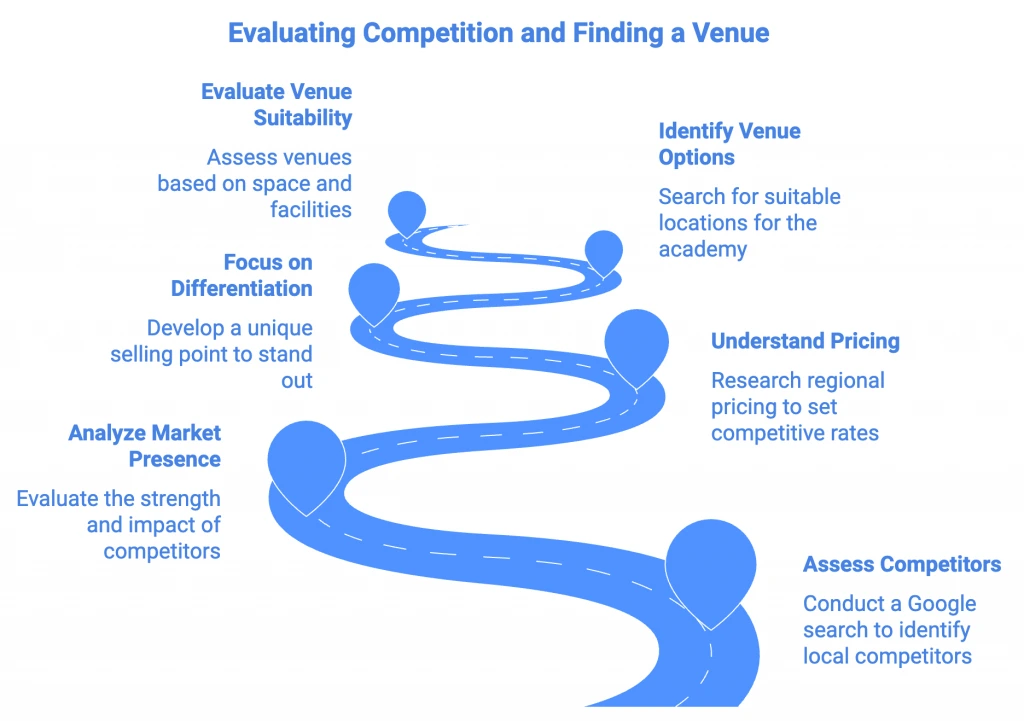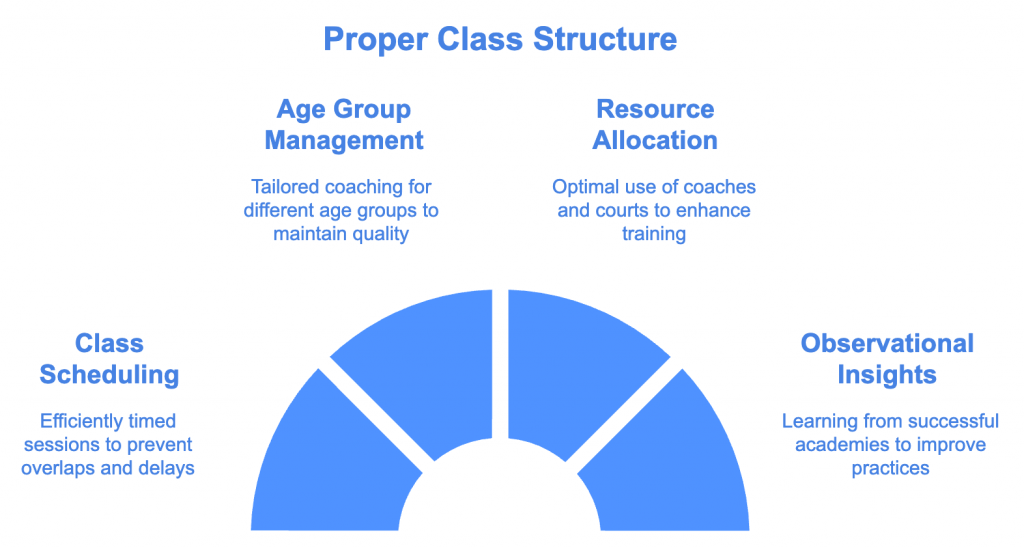7 Steps for How to Start a Tennis Coaching Business
Tennis is a sport that attracts millions of eyeballs each year to its international tournaments. Take The US Open, Wimbledon viewership, for example. In fact, according to a survey, about 87 million people worldwide play the game. That’s only players! Count in the spectators and the figure crosses 1 billion.
With such a gigantic fan base, the sport clearly has a juicy promise for those looking at it as a possible investment, especially for those interested in how to become a tennis coach and build their own tennis coaching program.
That’s the reason why many, or say, most tennis stars consider starting their own coaching academy post-retirement. Sometimes even as they’re still active. For reference, Alexander Waske, Rafa Nadal are fitting examples of player-turned-coaches in tennis.
In this article, you’re going to find out how exactly YOU can start your tennis coaching business in 7 steps – and you don’t even have to be a world-class player to start coaching tennis.
One note before we get started – don’t be discouraged, thinking you need to be a Serena Williams or Roger Federer to be a tennis coach.
Not at all!
To start teaching people tennis, all you need is an undying passion and unfettered commitment to play and teach the prestigious sport. You just need to be true to the game and learn the basics of how to coach tennis effectively.
Alright, without further ado, here are the steps…
Get Certified By the Authorities

First of all, all your tennis-related talent is pretty much zero use if it’s not validated by the authorities. If you’re wondering how to become a certified tennis coach, this is the first step.
Take it this way: would you ever try your luck and learn from someone claiming to be a Taekwondo master who had, say, no credentials to back him up? Absolutely not, right?
Well, the same is the case with tennis, or, for that matter, any sport. Becoming a professional tennis coach requires certification to ensure your credibility.
So, get certified as soon as possible.
Basically, there are two major certifications in the US. United States Professional Tennis Association (USPTA) and Professional Tennis Registry (PTR). The difference being their level of specialization.
USPTA has a tennis-for-everyone kind of policy regardless of the age and ability of a player.
PTR, on the other hand, is a specialization platform, and they focus on picking the best match for their criteria.
As a coach, you can be a member of one or both organizations and enjoy exclusive benefits.
Make Up a Detailed Business Plan
To set your goal and start working toward it, you’ll need a solid business plan, especially if you’re serious about becoming a tennis coach. When creating your plan, there are several key factors to consider.
First, decide on your target audience.
Who will you coach? Children, high-school students, middle-aged professionals, or retirees? Understanding what age to start tennis lessons for different groups can help you tailor your services effectively.
While you might want to run an academy for all, that approach can lead to challenges. Younger kids may not enjoy playing with older people, and teens might get frustrated practicing with small children. So, it’s better to specialize—unless you can provide separate courts for each group.
Next, think about your financial plan. Consider how much professional tennis coaches make when setting your income goals. Also, how will you fund the business initially? Will you need a loan, and can you manage the repayment?
These are critical questions to answer before launching your tennis coaching business.
The best way forward is to seek professional advice from a business analyst who can help you create a strategy tailored to your needs.
And one more thing: don’t forget to choose a great name for your academy—it’s an essential part of building your brand!

Evaluate the Competition
Now, it’s time to assess and size up your competitors.
On a side note, hopefully, you’re not located in NY or Florida – they have the majority of US tennis coaches. (Count them or count sheep!)
The easiest way to evaluate your competition is by doing a quick Google search to see what professional tennis coaches and academies are operating in your area.
So, learn about the top tennis coaching institutes nearby and assess how strong their presence is, and how they might affect your entry into the market. This research can also help you understand how much professional tennis coaches make in your region, giving you a benchmark for setting your own rates.

But don’t let the competition scare you.
The upside of competition is that it proves there’s a demand for tennis coaching, and you can still fight your way up to claim your share of the market.
However, competing on price with an established tennis coach can lead to a price war, where you both lower your rates to unsustainable levels. This can hurt your business in the long run.
The smarter approach is to focus on differentiation and find your unique selling point (USP). By standing out with something special, you can attract clients without racing to the bottom on pricing.
You’ll learn more about crafting your USP in the next steps.
Now, let’s talk about finding the perfect venue for your academy.Look for a Great Venue
As it happens, professional tennis requires a lot of land.
A normal-sized tennis court can usually take max 6 players in a triples match, but that’s still rare. Also, new students may need one-on-one training rather than team plays.
The thing is that you’re going to need plenty of land property to provide the students with enough space to play and practice freely.
So, to find a suitable place for your tennis school hit the local directory and search for tennis communities in your area.
Drive down to the venues that best match your preferences and scout them out.
If you’ll offer classes during school vacations, like summer camps, find out which local schools have tennis facility and if they are willing to rent out the place to you during the breaks.
Further, you can consider buying a plot where you can build your court from scratch.
But, that’s obviously going to cost thousands, or hundreds of thousands, of dollars.
Another option may be that you partner with schools in your city lacking coaches, run your business on their premises and split the profits.
Strategize Your Marketing
Now, this is, perhaps, the most important part of the entire plan. And, ironically, it has little to do with tennis itself.
Effective marketing, as you know, is the key to success for any business.
To start your coaching academy in the right gear, you’ll need to adopt a strong marketing strategy.
So, going back to your unique selling point (USP), decide what sets you apart. And to get it right, you must be clear about your target audience. Again, who do you aspire to teach tennis?

Let’s say, you’re targeting senior citizens. Build your marketing campaign specifically around them.
Get your ads published in the local newspaper (which older individuals are likely to read), contact senior care homes, and offer them free vouchers. Cold calling can also be effective. Highlight the benefits they will gain by playing tennis at your academy, such as improved fitness, mental health, and overall happiness.
Sell the benefits of tennis to them!
Similarly, if your target audience is teenagers, you’ll need to adopt a more modern marketing approach. Social media, school magazine ads, and cold emails will work better for this demographic.
Got the idea? Great!
Get Coaches, Equipment and Insurance
You’re definitely not thinking in terms of a one-man-show, are you?
Because if you think you can singlehandedly manage your business, give enough attention to your students, and also deal with parents and customers, you are dead wrong.
You’ll most likely need a helping hand—or, more likely, multiple helping hands!
So, start by recruiting coaches, and make sure they are the real deal and not casuals. If you’re serious about creating a professional tennis coaching program, you need skilled and reliable staff.
You’ll also want to conduct background checks on all your staff to ensure that everyone involved in your coaching team is trustworthy and qualified.
As for equipment, make sure you have the standard gear required for coaching tennis. Here’s a list:
- Different sized rackets.
- Grips.
- Tennis balls.
- Wristbands.
- Headbands.
- Vibration dampeners.
- Ball machines.
Now, take it easy. You won’t have to supply every kid on the court with all of that equipment.
Typically, students are expected to bring their own gear or pay for what they borrow from your academy. But it’s definitely a good strategy to have all necessary tennis equipment readily available—unless, of course, you’re okay with telling your students, “Sorry, we don’t keep rackets here!”
And, last but not least, make sure your academy is fully insured. Whether it’s tennis coach insurance or general liability coverage, protecting your business from risks is crucial. In fact, insurance might even be a legal requirement when you start your coaching business, so you’ll need to get it anyway.
Structure Your Classes
A lot of academies start out with great hope and enthusiasm, but as student numbers grow, the quality of coaching often declines, and the academy loses its initial spirit.
This happens for many reasons, but a major one is the lack of proper class structure.

When classes clash, when coaches are stretched between training pupils of different ages all at once, or when students have to wait too long for a free court, the quality of tennis coaching inevitably suffers.
That’s just common sense.
To avoid frustrating your students and keep your academy running smoothly, it’s crucial to properly structure your classes. This is especially important when you’re working with a variety of age groups and skill levels, as knowing what age to start tennis lessons for different players can help you manage your schedule more effectively.
A great tip is to visit a few tennis courts in your city (outside your competition zone) and observe how they organize their practice sessions.
See how they allocate professional tennis coaches to each group and how they set the timings for different classes.
This will provide valuable insights. You can also look up books or free tutorials online that explain the best strategies for designing effective classes. There’s plenty of helpful content available on the internet.
Conclusion
The seven steps you went through are the major ones you’ll need to follow to get on track and kick off your journey to starting your tennis coaching business.
Bear in mind, the journey won’t be smooth. You’ll need to be mentally prepared for all kinds of ups and downs.
Just like any business, for your tennis coaching dream to become a reality, you’ll need to start with a comprehensive plan. From structuring your tennis coaching program to ensuring you understand how much professional tennis coaches make, every detail matters.
The plan, combined with the right choice of coaches, the perfect location, and a solid portfolio of certifications, backed by hard work and perseverance, will ultimately lead to your success.
That’s all you need. Now, get to work!
And before you go—head to the comments and share your thoughts. We’d love to hear YOUR story. How did you (or someone you know) start a sports coaching business? Everyone is keen to hear it!



